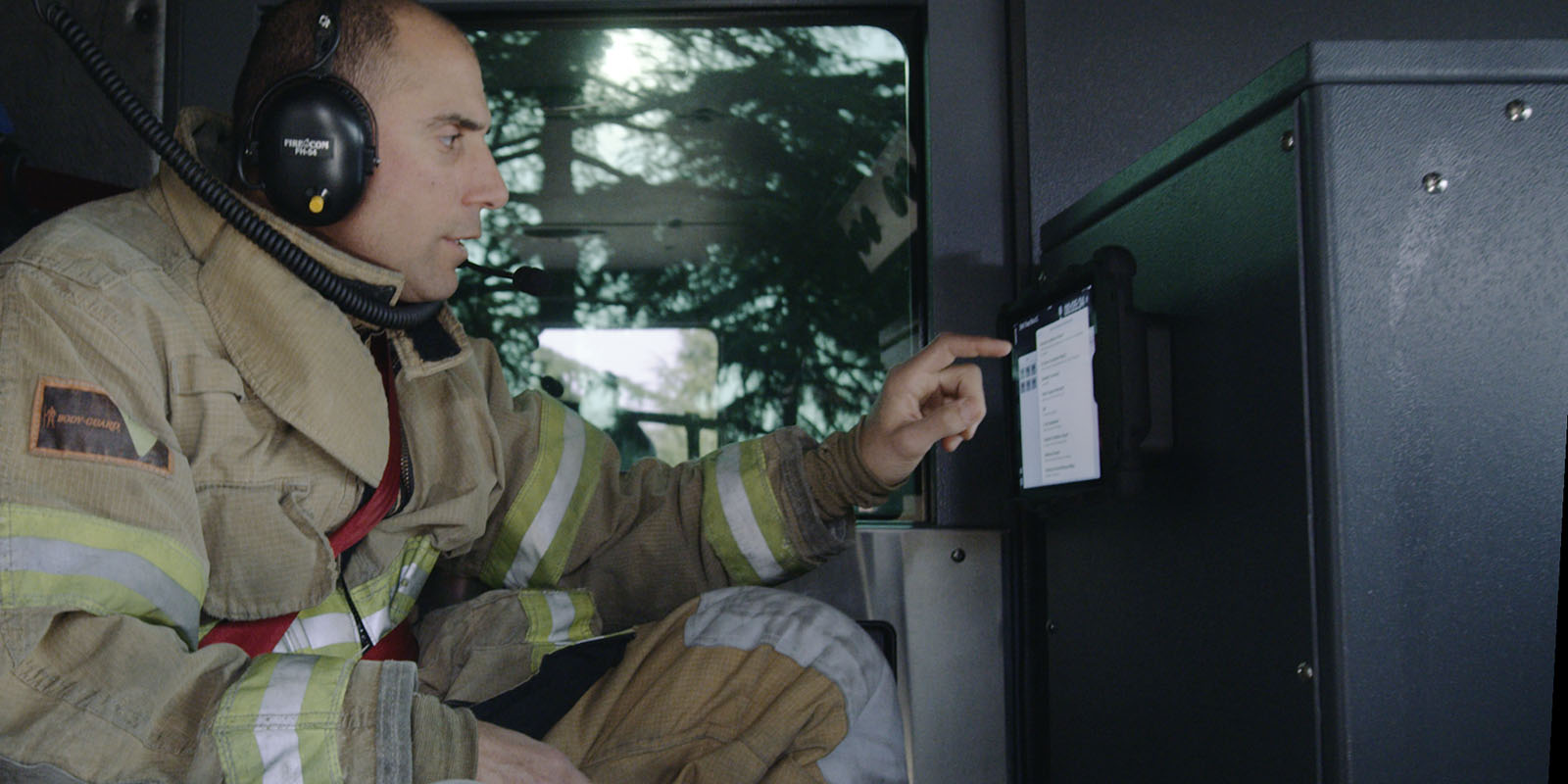I’ve been in the fire service for over 20 years. I haven’t just been IN the fire service, I’ve worked in a couple of the busier agencies on the west coast. And in a constant quest for legitimacy, I’ve always tried to work in the busiest companies in these departments. In my time, I’ve seen a decent amount of fires and critical incidents as a firefighter, then an Engineer, and now as a company officer.
In my two decades, I’ve also witnessed an evolution in on-board technology on fire apparatus. When I first started, the most technical item on the fire engine was multi-band a VHF radio. And then, it was Mobile Data Terminals (MDTs): small computers that looked like they belonged in 1950s NASA stock footage. They were mounted on the dashboard of apparatus and the first versions were hardware dependent with side-mounted buttons that allowed the user to report on status; Responding, In Quarters, etc.
Then came MDCs- Mobile Data Computers. This was an expansion on the laptop idea where the device became ruggedized according to Military Specifications and even gave the user – wait for it- a keyboard! Again, users really only used a small percentage of the available features the majority of the time and these devices and their connectivity crashed often with several updates constantly streaming in to add on to the workflow.
As a concept, the MDC represented a minor improvement in the original roll outs of on-board technology but for the working firefighter that was responding to a dynamic emergency right around the corner, it wasn’t a solve- trying to lookup a satellite map or get real-time intelligence or navigation was a clunky process and involved a lot of drilling down. The working firefighter’s default was to use only the small number of touch-screen features that they were familiar with. IT folks would argue that firefighters were reticent to train on this valuable technology while operators in the field argued that UNTIL the technology and associated hardware fit with OUR work flows, technology would be seldom used and gather dust. In short, we don’t keyboard on the way to a working structure fire- ever!
A funny thing was happening right around 2007/2008. With the dawn of the iPhone, the “kids in the backseat” (my term for rookie firefighters riding backwards) were coming up with real-time situational awareness and accurate navigation on their iOS devices. The dialogue would go something like this:
Captain: “The MDC has crashed again….”
Firefighter: “No worries Cap- I have directions on my iPhone- take a right at the light”
As a working firefighter, I use my iPad for notification, response, mapping and navigation, situational awareness and incident command along with a whole host of other applications.
During the next several iterations of the iPhone there were some genius firefighters that were envisioning a total disruption and dismantlement of Windows-based onboard technology and replacing those legacy incumbents with iPads. And that’s exactly what started to happen around 2011 and 2012. Fire Chiefs were recognizing a simple issue: MDCs were costing about $5500 per unit and iPads were about $800-$1000. The $5500 MDC’s were providing a fraction of the value compared to the iPads that were providing rich and intuitive maps, easy access to the web for reference information (think highway patrol cameras and hazardous materials information) and navigation. Getting a satellite view of a neighborhood being threatened by fire was fairly easy and software companies like Tablet Command had come up with easy ways to integrate with CAD and track units during emergencies in real-time - enough said.
A minor drawback with the iPad was that it was never designed for a military or paramilitary application; it had to be, charged, mounted, and protected in such a way that firefighters could use these devices in a versatile manner in the harshest conditions. It needed heat and cold protection, and it needed to be shock-proof if we were going to grab these dash-mounted devices and convert them to handheld use on the spot, like a reliable iPad rugged case.
iPort solves all of these problems with their Launch Port Rugged System. This is a wireless charging solution that allows the iPad to be securely mounted on an iPad vehicle mount while charging. In short, it was exactly what we needed. This intuitive, all-in-one mounting, charging, and protection rugged iPad case allows us to use our iPads with confidence knowing that we can treat technology like another tool in our firefighters tool box whether it be 20 stories up a high-rise or 20 miles in the backcountry.
iPads are a no brainer in the field. With a variety of reliable and mission critical applications they are in daily use in several fire departments across the country. iPort provides the best iPad vehicle mount and rugged case that protects our iPads from the elements and the hazards that come with firefighting. As a working firefighter, I use my iPad for notification, response, mapping and navigation, situational awareness and incident command along with a whole host of other applications. The combination of iPads and iPort represents a revolution in public safety. Like never before, firefighters and other emergency responders are using technology to enhance their already existing workflows making us safer and more efficient during the emergency.






